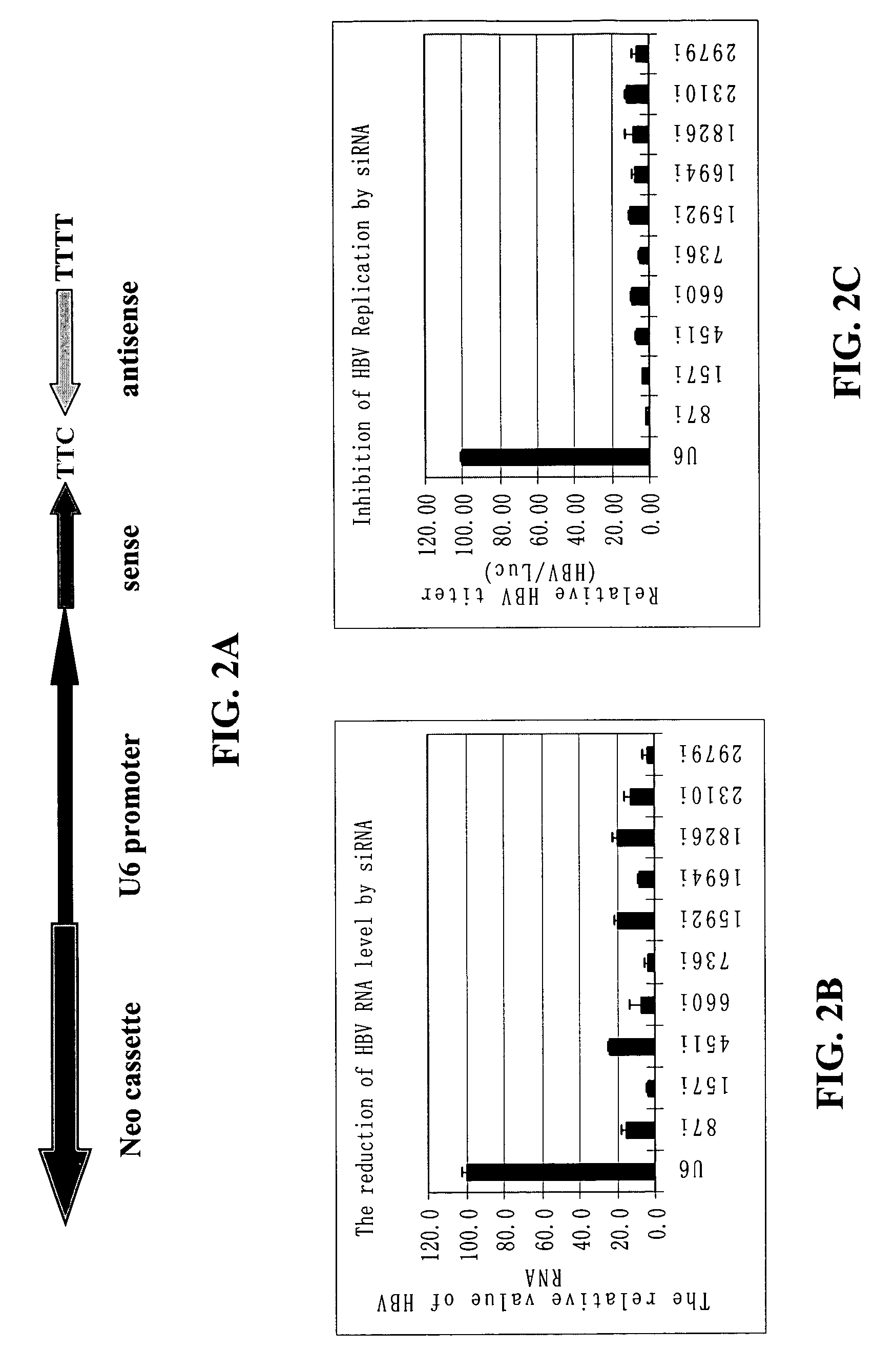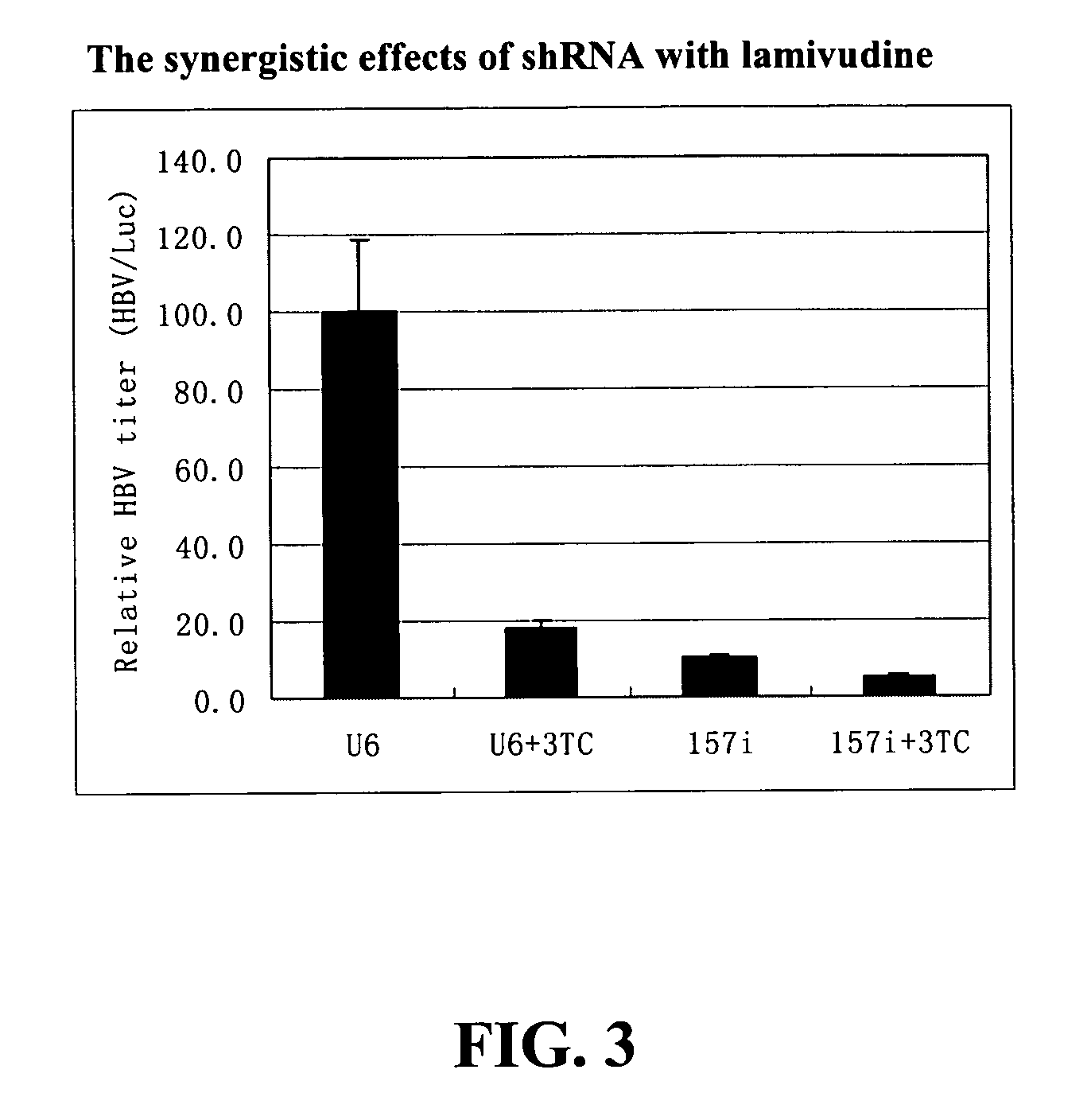Inhibition of hepatitis B virus (HBV) replication by RNA interference
a technology of rna interference and hepatitis b virus, which is applied in the direction of viruses/bacteriophages, peptide sources, genetic material ingredients, etc., can solve the problems of the occurrence of drug resistant hbv mutations, and the low efficacy of current drugs, so as to achieve more effective inhibition
- Summary
- Abstract
- Description
- Claims
- Application Information
AI Technical Summary
Benefits of technology
Problems solved by technology
Method used
Image
Examples
Embodiment Construction
[0013]The present invention relates to the inhibition of Hepatitis B virus (HBV) replication using RNA molecules of the present invention. Specifically, the RNA molecules of the present invention are double-stranded ribonucleic acid molecules (dsRNA). Specifically, the invention relates to small interfering RNAs (siRNA) which are double-stranded RNAs that direct the sequence-specific degradation of messenger RNA in mammalian cells. The invention relates to development of a new anti-HBV therapy by inhibition of Hepatitis B Virus (HBV) replication using stably-expressed short hairpin RNAs (shRNA), which degrade HBV pregenomic RNA and message RNAs.
5.1. Inhibition of HBV Genes
[0014]Disruption of the HBV life cycle will inhibit HBV replication. Upon infection, the partial double strand DNA of the present invention is repaired to form a 3.2-kb cccDNA, which serves as a template to transcribe overlapping RNA species including a 3.5-kb pregenomic RNA (FIG. 1A) and mRNAs (FIG. 1B) coding for...
PUM
| Property | Measurement | Unit |
|---|---|---|
| pH | aaaaa | aaaaa |
| pH | aaaaa | aaaaa |
| nucleic acid | aaaaa | aaaaa |
Abstract
Description
Claims
Application Information
 Login to View More
Login to View More - R&D
- Intellectual Property
- Life Sciences
- Materials
- Tech Scout
- Unparalleled Data Quality
- Higher Quality Content
- 60% Fewer Hallucinations
Browse by: Latest US Patents, China's latest patents, Technical Efficacy Thesaurus, Application Domain, Technology Topic, Popular Technical Reports.
© 2025 PatSnap. All rights reserved.Legal|Privacy policy|Modern Slavery Act Transparency Statement|Sitemap|About US| Contact US: help@patsnap.com



